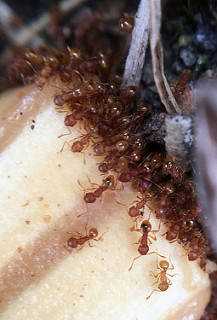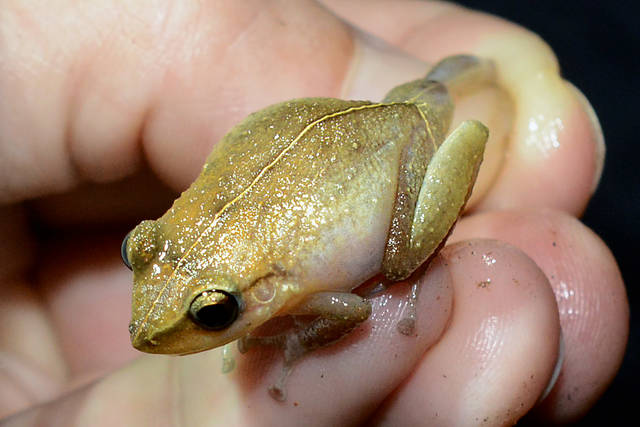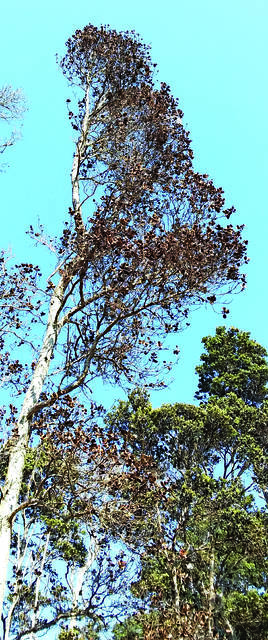KAILUA-KONA — Obstacles in the fight against invasive species are several, but one sometimes overlooked is simple access to lands playing host.
Little fire ants and rapid ohia death don’t concern themselves with property rights — a luxury organizations bent on control and/or eradication of such pests don’t have at their disposal. But a measure that would make it easier for groups like the Big Island Invasive Species Committee (BIISC) to access private lands for control/eradication purposes passed its first committee Thursday.
Introduced by Rep. Nicole Lowen (D-North Kona), House Bill 201 would change language in an existing law allowing access to private property upon which invasive species are known to exist.
Lowen’s bill would expand that authority to include private lands on which invasive species can be “reasonably suspected” to exist “based on the results of systematic surveys or reports or proximity to known populations.”
BIISC does flyovers in helicopters to spot rapid ohia death. Problems like albizia trees can be seen at distance. Coqui frogs can be heard from perhaps even farther away. But less conspicuous species require confirmation up close.
“When we introduced this measure and wrote the bill, it was in response to concerns from little fire ants from my end,” said Lowen, who chairs the House Committee on Energy and Environmental Protection that passed the measure last week. “It may be helpful for other invasive species now or ones to come.”
If the bill becomes law, BIISC won’t just waltz onto properties without notice.
“We try to track people down in every possible way before we just say, ‘We can’t get in touch with this person,’” explained Franny Brewer, communications director at BIISC.
She said the process involves submitting a request to the county noting the address of the property, outlining the problems and detailing the control/eradication plans.
County Corporation Counsel evaluates the submission and makes efforts along with BIISC to contact property owners. Every method from phone calls to Facebook messages is employed. If efforts are to no avail, a certified letter is mailed out providing 30 days notice of the county’s intention to allow BIISC to enter a property and carry out its control/eradication work.
The same process is already employed on lands where invasive species have been positively identified. Lowen’s bill would simply extend the authority to engage in the process if reasonable circumstantial evidence exists of an as of yet unidentified invasive species on private property.
“I wouldn’t say we have so much a problem with landowners not wanting us to go on the property,” Brewer said. “But what is consistently a problem is absentee landowners from whom we get no response.”
Lowen said she’s tried to pass the legislation for a couple of years now and a measure to accomplish the same goal fell just short of the finish line last session.
HB 201 needs to secure a hearing before the House Committee on Judiciary by Friday. If it’s passed there, it will cross over to the state Senate for consideration.












This brought to mind Syd Singer And Soma Grismaijer (of the coqui frog sanctuary… and also bra-caused cancer theory) — but just checked, and hadn’t realized they apparently moved to the Mainland a few years ago. (Not sure exactly where they lived in Pahoa, but perhaps auspiciously timed with respect to the recent eruption.)